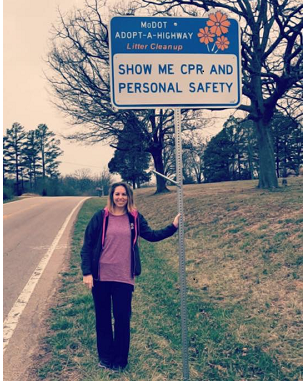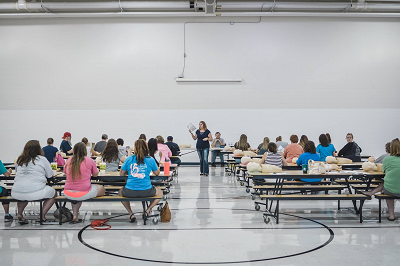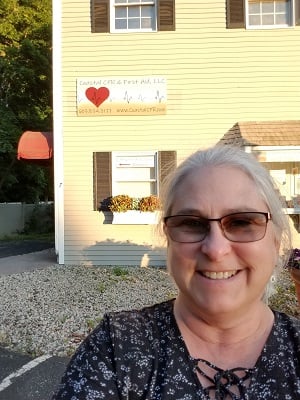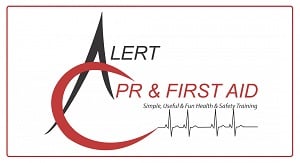 Training Center Profiles Training Center Profiles
Meet Your Peers
Discover what your peers are thinking about the emergency care industry, the challenges their TCs face, and the solutions they’ve found in their quest to make their workplaces and communities safer.
TC Name: Erie Homes for Children and Adults (EHCA INC), Erie, PA. www.ehca.org
Director: Rachael Baginski
How long have you been in business? 5-10 years as an internal, non-profit ASHI TC
What is the biggest challenge at your company?
Having the employees show up for their scheduled trainings, or making up the scheduled trainings in a timely manner
What strategies or investments have proven to be a waste of time and money?
Not sure yet; I’m still learning more every day.
Based on what you know now, what advice would you have given yourself when you were starting out?
I would have liked to shadow instructors outside the agency
Where do you see your business and the emergency care training industry in the next 5-10 years?
Busy, as we are a growing company
What has your company done to make safety part of the day-to-day culture?
We have a health and safety committee with over 20 members
Can you share a favorite Good Samaritan story about your students?
An employee attended her scheduled re-certification class. Two weeks later, while at church, the pastor collapsed. The employee and another churchgoer performed CPR on the pastor. Unfortunately, he did not survive. Nevertheless, our employee told me that she will never complain about having to attend another CPR/AED/First Aid class ever again, and we’re so proud that she was confident enough to step up to help to the best of her ability.
Where do you go to stay current with the latest industry information and knowledge?
ASHI, online sources
What is the most difficult part of managing an internal Training Center?
Employee scheduling and working within a limited budget
 TC Name: Show Me CPR and Personal Safety, Sullivan, MO. www.ShowMeCPRMissouri.com TC Name: Show Me CPR and Personal Safety, Sullivan, MO. www.ShowMeCPRMissouri.com
Director: Emily Garcia
How long have you been in business? 4 years in Missouri, 8 years in Arizona, with 3-5 years as an external, sole-proprietor ASHI TC
What is the biggest challenge for you and your business?
Managing the increasing cost of training materials and equipment without passing the cost on to customers
How do you market your business?
Website, email marketing, radio/TV advertising, online advertising, ads in local publications, speaking as an emergency care expert at public events, offering a free public class, social media (Facebook, Instagram, Pinterest, LinkedIn), personal referrals, and information booths at community events
Based on what you know now, what advice would you have given yourself when you were starting out?
Develop a vision and mission statement, stay true to the reason that you became an instructor, and bring your passion with you every day, every class.
Where do you see your business and the emergency care training industry in the next 5-10 years?
My goal is to change the perception of a CPR class: to make everyone feel comfortable and confident when they leave that, no matter what role they play in an emergency situation, they are doing exactly what is needed at that moment. I would love to see more people empowered that they have the skill set to help in an emergency by making classes more user friendly and less stuffy.
What are some of the most common misconceptions or mistakes you have seen/heard in your career?
That you must have more advanced training to perform CPR and first aid correctly, and, if you are unable to perform CPR physically, you are "no use" -- you can still help! You can call 9-1-1, help give verbal CPR instructions to someone that is physically able to perform CPR, etc.
Of your business or training investments that cost less than $500, what has given you the best return?
Personal referrals. I also use safety magnets for advertising and as a gift for each of my students, as well as provide a CPR pocket facemask with my business logo on them.
What strategies have proved to be a waste of time and money?
Cold-calling and sending out blind emails or blind mail advertisements. We are in the business of personal connection, and we need to develop trust and relationships with our community.
Where do you go to stay current with the latest industry information and knowledge?
ASHI blog and newsletters, AHA, and ZollFire
Can you share a favorite Good Samaritan story about your students?
About a week after I taught a class at the University of Missouri, one of my students noticed someone who appeared to be choking, but the person got up from her lunch table without saying a word and went into the restroom. My student followed her into the restroom. It's a good thing, because the woman really was choking. My student was able to successfully perform abdominal thrusts!

 TC Name: Coastal CPR & First Aid, LLC, Hampton, NH. www.CoastalCPR.com TC Name: Coastal CPR & First Aid, LLC, Hampton, NH. www.CoastalCPR.com
Director: Gail Klanchesser
How long have you been in business? 12 years, with 5-10 years as an external, sole-proprietor ASHI TC
What is the biggest challenge for you and your business?
Administration and marketing are some of my challenges, as sometimes I am so busy teaching that I don't have enough time to work on them.
How do you market your business?
Website, online advertising, ads in local publications
Based on what you know now, what advice would you have given yourself when you were starting out?
I would have set up a lot of administrative tasks differently to be more efficient.
Where do you see your business and the emergency care training industry in the next 5-10 years?
I hope to continue to grow and offer new programs.
What are some of the most common misconceptions or mistakes you have seen/heard in your career?
That CPR or first aid classes should be free. We have to purchase training materials and supplies, and we need to stay updated in our field to provide quality courses to our students.
Of your business or training investments that cost less than $500, what has given you the best return?
My website
What strategies have proved to be a waste of time and money?
Local networking groups. I'm a unique niche, but do not get a lot of referrals from these groups.
Where do you go to stay current with the latest industry information and knowledge?
AHA and HSI newsletters and blogs
Can you share a favorite Good Samaritan story about your students?
I recently had a student who was taking her third renewal with me. Her current employer didn't value CPR and first aid certification, but she did. At her previous position, her employer trained staff annually and she used her CPR skills to save a co-worker’s life. I'm thrilled that this student continues to call me every two years to renew her certification.
 TC Name: ALERT CPR (Aquatic & Land Emergency Response Training), Coeur d’Alene, ID. www.ezytrainingsolutions.org TC Name: ALERT CPR (Aquatic & Land Emergency Response Training), Coeur d’Alene, ID. www.ezytrainingsolutions.org
Director: Jeremy Siegler
How long have you been in business? Over 15 years as an external ASHI TC
What is the biggest challenge for you and your business?
Administration
How do you market your business?
Website, online advertising, direct mail
Based on what you know now, what advice would you have given yourself when you were starting out?
Offer flat on-site rates.
Where do you see your business and the emergency care training industry in the next 5-10 years?
Growing and evolving
What are some of the most common misconceptions or mistakes you have seen/heard in your career?
Thinking this a part-time job, and not taking into account administration, development, travel, equipment care, etc.
Of your business or training investments that cost less than $500, what has given you the best return?
CPR keychains
What strategies have proved to be a waste of time and money?
Business fairs
Where do you go to stay current with the latest industry information and knowledge?
Starguard Instructor Trainer workshops and trainings
Can you share a favorite Good Samaritan story about your students?
One month after training, one of my students saved her son who was unresponsive in the water.
We want to hear from you!
Share your wisdom with your TC peers by completing one of our 15-minute profile surveys.
If your TC provides training for individuals or organizations for a fee, click the "External TC" button. For those TCs that offer training for employees/members at no charge, choose "Internal TC."
 
|